The Dangers of Staying in One Place
Printed in the Winter 2016 issue of Quest magazine.
Citation: Goldsberry, Clare. "The Dangers of Staying in One Place" Quest 104.1 (Winter 2016): pg. 29-31
By Clare Goldsberry
Google is a great place to find philosophical tidbits. While this saying didn’t have an attribution, I copied it into a book I keep of great quotes:
Sometimes walking away has nothing to do with weakness and everything to do with strength. We walk away not because we want others to realize our worth and value, but because we finally realize our own.
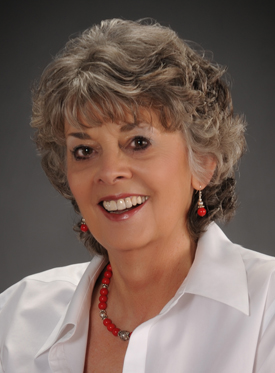 It struck a chord with me because many times I’ve walked away from people, from situations, from relationships, and even from religions because they no longer fit or seemed right any longer. At these times I finally realize that the need to fulfill my own destiny (whatever that is), or to follow my path, steers me in another direction, because the direction I’ve been moving in no longer feels right. I have never been able to stay in one place very long — or with one person — and especially not with one religion. My Higher Self begins to stir something within me; my consciousness begins to shift, and I can feel myself beginning to pull away. It’s an odd feeling, even though I’ve felt it many times during my life. It is as if I am moving further from a particular situation or place in my life to make room for something else.
It struck a chord with me because many times I’ve walked away from people, from situations, from relationships, and even from religions because they no longer fit or seemed right any longer. At these times I finally realize that the need to fulfill my own destiny (whatever that is), or to follow my path, steers me in another direction, because the direction I’ve been moving in no longer feels right. I have never been able to stay in one place very long — or with one person — and especially not with one religion. My Higher Self begins to stir something within me; my consciousness begins to shift, and I can feel myself beginning to pull away. It’s an odd feeling, even though I’ve felt it many times during my life. It is as if I am moving further from a particular situation or place in my life to make room for something else.
I seem to feel more comfortable in places and with people who offer me freedom from the constraints of rigid thinking or acting. I feel drawn to places in which “flow” can happen naturally and spontaneously. I love the natural world, and my connection to it grew out of the place where I grew up. As a child I was reared on a small farm that was primarily one big playground for my two brothers and me. Our father worked in the city, but our mother had been raised on a farm, so she did the gardening and the canning. We always had a couple of cows that were raised for meat, and some ponies for us to ride.
My world was one of the smell of green grass and fresh-cut clover hay, the tantalizing excitement of summer rains that came often and kept the air washed clean and invited the cry of the rain crows — which I later learned were mourning doves. My favorite spot was in my Thinking Tree — a great, noble sycamore with smooth, white-barked limbs mottled with flaking brown bits of overbark — lying out prone on a huge limb that had grown horizontally out over the creek that ran through our farm. I’d lie there for hours, listening to the music of the water flowing beneath me while I daydreamed of my life to come, even though it was always difficult to imagine being anyplace but on the farm.
It was there, in my Thinking Tree, at age ten, that I first heard my inner voice. I’d asked what I would be when I grew up. “You’re going to be a writer, Clare,” it said. It was plain and clear — a sound, yet not a sound that one would hear with one’s physical ears. Whose was that voice? I finally satisfied myself with the idea that it was God talking to me. After all, God knew me and knew my name. Surely it must have been God!
As much as I loved our little farm in Kentucky, I was always filled with a restless sense that I wanted to — needed to — move on. Being called away was the first step. Finding the path by which I could go forward was often the more difficult step.
For me, a lifelong spiritual seeker, the pursuit of religion and the spiritual path was my passion. I was always questioning everything. I’d question my Sunday School teachers until they were exasperated with me. “Just believe!” they would tell me, which certainly sounded easy enough but never really satisfied my longing to know.
When I became a teenager in high school, a new minister came to Bullittsville Christian Church who was very different from most of the ministers we’d had. He was an Old Testament scholar. He did not seem rigid in his religious thinking, but was open and seemed to enjoy my questions, which he was not at all reluctant to discuss with me. We’d spend hours in his office in the church talking about religion, the history of religion, and why people were (or weren’t) religious. When I married a Mormon man at age twenty-one, Rev. O’Neal told me that I would join the Mormon church. “No, I won’t,” I protested. “I like the Disciples of Christ church. I won’t change.”
“Oh yes, you will, Clare,” he replied. “Because you have too many questions and Mormons have all the answers.”
Not that those answers would be the truth or my truth — but they did have answers. After nearly ten years, however, their answers were no longer satisfying. I’d never really stopped searching for or pursuing the truth, and few answers the Mormons provided held any real satisfaction to my constant questioning.
And so my pursuit continued beyond Mormonism, back to the Disciples, out of the Disciples, and into the Eastern philosophies — first Buddhism, then its forerunner, Hinduism. I have often asked myself if the pursuit for knowledge, truth, and realization should ever end. Do we at some point settle into a single spiritual tradition and become content with what we find there? Or are questions an intrinsic part of our human search for the divine? And if the questions are an intrinsic part of our search, then are they more important than the answers?
There is something certain, reassuring, and comfortable in being dedicated to a strict dogma or to absolute doctrine. I’ve often thought that people like the Mormons, who believe absolutely and undoubtedly that their church is the only true church, that their belief system is the only true belief system and provides the one way to get to heaven, are perhaps more content and satisfied in their absolutes than we who are seekers. From time to time, I’ve felt envious of people who could find perfect contentment in one place for their entire life. But that wasn’t me. That’s not who I am, and so I must always continue on, listening to the call that it is time to leave.
There are dangers in staying in one place. One can get stuck in that place, and stuck in a way that becomes an obstacle. Belief systems can become our greatest obstacle to our spiritual growth because we begin to invest everything into the belief system, which can be rigid, unyielding, and unbending and fail to invest in the fluid and dynamic experiences which life can give us.
I’ve discovered over the years that I do not take being called away lightly. My first response is to resist that call, to tell myself that it’s just my own feelings of restlessness arising again and that if I just stick it out the feeling will go away. That tends to work for a while. But that nagging feeling of being called away stays with me, no matter how forcefully I try to tamp it down or push it to the back of my mind.
At these times I have a feeling that my work or my learning in this place is complete, and there is nothing more I can do here. The purpose for which I was called to this particular job or spiritual calling has been fulfilled, and it’s time for me to walk away from it and await my next calling.
Often I’ve received the call to move on at times when I believed very much that I had found my place and was doing exactly what I needed to be doing in my spiritual life. This shift in consciousness, which seems to come as my experiences change, leaves me feeling that I no longer need to hold on to past ideas. Although they seemed to fit perfectly then, they no longer feel like a part of my path. It’s not an abandonment of past ideas — I’ve stayed rooted primarily in Eastern philosophies — but it is more of a moving beyond what was “true” for me yesterday to a deeper understanding of what it means to be on path that is being created one step at a time as I experience it.
Buddhism was that path for me — and remains so. After many years of study, contemplation, and meditation on my own, I found (quite by accident — or maybe not!), and joined, Sangha, community. Nonetheless, with groups— particularly religious groups — it doesn’t take long for groupthink to set in. Even in Buddhism there are those who create a rigid, dogmatic system out of this tradition that, if one adheres to the Buddha’s teachings, is as open, spacious, and expansive as the mind. I once read this comment online: “There have been too many worthy attempts at pursuing the Dharma that have become bogged down in dogma, so the vitality is lost. We can’t live life without structure. But being bound by it is not living nor can it truly be practice.”
Of course seeking is a good thing as long as one does not get addicted to the search. I read an essay recently by Charles McAlpine, owner of Storm Wisdom, a center for intentional living in Phoenix that offers healing services and practices, crystals, and other tools for one’s path. He noted that at one time he’d become “addicted to the pursuit” shortly after he’d started “participating in retreats, workshops, classes and experiences that were designed to connect us with the deeper relationship with Self.” He said that it finally got to the point that all he could think of was “wanting more! Being someone who loves to learn, the pursuit was intoxicating.” He acknowledged how “the focus of pursuit would or could take over.”
Those words really touched me, not only because I’d often wondered about that for my own search, but because of a few friends who also seemed to be addicted to the pursuit. For myself, my search narrowed into the Eastern philosophies, but even those teachings can be found to various degrees in many other ancient and esoteric traditions, as if the ideas knew no human bounds, but everyone, everywhere at some point could meet up with them amidst their own search. I began to understand that in a way, the Eastern philosophies were the end of my pursuit. The more I saw those ideas embedded in the ideas and thoughts of other spiritually attuned persons, the more I realized that I could stay with Eastern traditions as the basis for the development of my personal truth.
But even that requires a winnowing and sifting.
Stephen Sohettni, in an article in Tricycle magazine, writes, “I began to see the path as a state of mind, an attitude that, when maintained, is itself Buddhahood — not an achievement but a process. Far from being a concrete, predictable, and infallible road map, the path is empty . . . Like everything, it’s uniquely related to one’s own mental formations. We find our path, I thought, by probing our own creativity.
“I prefer words of common sense and humor to the flowery epithets of wisdom and compassion,” he goes on to say. “I think less about awakening than simply staying awake to the enlightening moments that are everywhere for anyone who pays attention. Staying awake means continually reevaluating the ground on which we walk. It’s not about belonging at all, but letting go.”
Perhaps the search takes us along a path of knowing and ultimately to that which is beyond knowing to not-knowing, and that is where letting go is of importance. The idea of going beyond has a rich tradition in Buddhism. This beyond knowing is called “excellent wisdom” or “highest wisdom” in ancient Buddhist traditions; it is going beyond the wisdom of the world. “O wisdom which has gone beyond, gone beyond the beyond, to Thee homage.” (Om gate, gate, paramgate, parasamgate bodhi swaha.)
The apostle Paul too taught the idea of going beyond worldly wisdom to the enlightened state of spiritual wisdom. When we think we know everything we need to know and the search seems to be at an end, we must then move beyond knowing to not-knowing. It is in this space of not-knowing that we reach the enlightened mind, where the illusory phenomenal world falls away and the wisdom of ultimate reality becomes our true home.
Clare Goldsberry is a professional freelance writer and volunteer teacher with RISE, a continuing education program for older adults, on Eastern philosophies, the Ageless Wisdom, Gnosticism, and Kabbalah. Her latest book, The Teacher Within: Finding and Living Your Personal Truth, can be found on Amazon. She is a member of the Theosophical Society’s Phoenix study group.


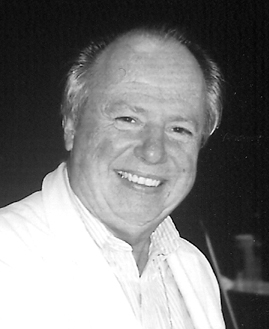 ser Alexander Scriabin (1872–1915) was a key figure in what is commonly called the Silver Age in Russian history (from the 1890s to the outbreak of World War I in 1914). This era saw a surge of interest in mysticism and in the occult and philosophical teachings of India and China, along with influences from Germany, including the thought of Nietzsche and the Christianized version of Theosophy developed by the Austrian visionary Rudolf Steiner. Rudolf Steiner’s second wife, Marie von Sivers, was a Baltic Russian. She helped spread Steiner’s views in Helsinki and Warsaw, cities in close contact with Russian intellectual circles.
ser Alexander Scriabin (1872–1915) was a key figure in what is commonly called the Silver Age in Russian history (from the 1890s to the outbreak of World War I in 1914). This era saw a surge of interest in mysticism and in the occult and philosophical teachings of India and China, along with influences from Germany, including the thought of Nietzsche and the Christianized version of Theosophy developed by the Austrian visionary Rudolf Steiner. Rudolf Steiner’s second wife, Marie von Sivers, was a Baltic Russian. She helped spread Steiner’s views in Helsinki and Warsaw, cities in close contact with Russian intellectual circles.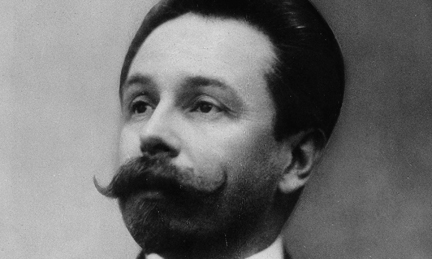
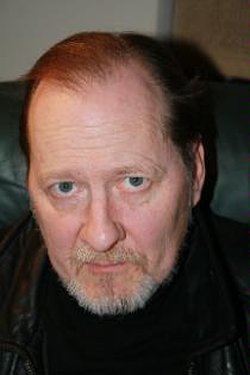 I was walking through “the yard” at San Quentin State Prison. The prisoners sunning themselves at tables near the worn baseball field would have pleased any casting director with their do-rags and the homemade prison tattoos on muscular bare arms. The man walking with me, though, was smallish, balding, middle-aged, and pale, making me think of an accountant. He might once have been an accountant, I don’t know; I do know he was a convicted murderer.
I was walking through “the yard” at San Quentin State Prison. The prisoners sunning themselves at tables near the worn baseball field would have pleased any casting director with their do-rags and the homemade prison tattoos on muscular bare arms. The man walking with me, though, was smallish, balding, middle-aged, and pale, making me think of an accountant. He might once have been an accountant, I don’t know; I do know he was a convicted murderer.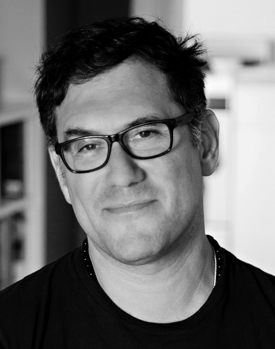 The method of positive thinking is simplicity itself: fix a goal in your mind, attempt to enter the feeling state that your aim has been achieved, and unseen agencies — whether psychological, metaphysical, or both — are said to come to your aid. Seen in this way, our thoughts are causative.
The method of positive thinking is simplicity itself: fix a goal in your mind, attempt to enter the feeling state that your aim has been achieved, and unseen agencies — whether psychological, metaphysical, or both — are said to come to your aid. Seen in this way, our thoughts are causative.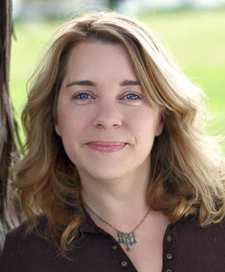 Cassandra Vieten: The Institute of Noetic Sciences is dedicated to fostering, on the largest level, a global transformation in consciousness. Transformation for us can happen on an individual level; it can happen on a level of a small group like an organization or an institution; and it can happen at a larger level of society. Take one example: there is a collective sense that when someone commits a crime, we should lock them into a cage. In general that’s agreed upon. And so I think, I wonder, if part of the work of the Institute of Noetic Sciences isn’t to challenge some of these prevailing worldviews.
Cassandra Vieten: The Institute of Noetic Sciences is dedicated to fostering, on the largest level, a global transformation in consciousness. Transformation for us can happen on an individual level; it can happen on a level of a small group like an organization or an institution; and it can happen at a larger level of society. Take one example: there is a collective sense that when someone commits a crime, we should lock them into a cage. In general that’s agreed upon. And so I think, I wonder, if part of the work of the Institute of Noetic Sciences isn’t to challenge some of these prevailing worldviews.